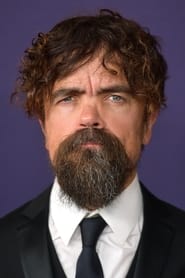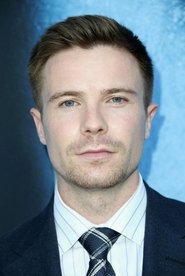
Ask Your Own Question
What is the plot?
In "Histories & Lore: The Faceless Men," the episode begins with a narration that introduces the Faceless Men, a secretive order of assassins based in the House of Black and White in Braavos. The visuals depict the imposing structure of the House, with its stark black and white colors symbolizing the duality of life and death. The narrator explains that the Faceless Men worship the Many-Faced God, who represents death in all its forms, and that they believe death is a gift that should be given to those who are ready to receive it.
The episode transitions to the origins of the Faceless Men, detailing how they were once a group of skilled healers who sought to alleviate suffering. However, as time passed, they became disillusioned with the world and turned to the worship of death. The visuals shift to scenes of the Faceless Men performing rituals, showcasing their ability to change their appearance and take on the faces of the dead. This transformation is depicted through a series of haunting images, emphasizing the eerie nature of their powers.
Next, the narrative delves into the training of new recruits, illustrating the rigorous and often brutal process they undergo to become Faceless Men. The recruits are shown in various stages of their training, learning to let go of their former identities and embrace the concept of becoming "no one." The emotional weight of this transformation is palpable, as the recruits struggle with the loss of their past selves while being indoctrinated into the beliefs of the order.
The episode then highlights key figures within the Faceless Men, including Jaqen H'ghar, a prominent assassin who plays a crucial role in the story of Arya Stark. The visuals depict Jaqen's enigmatic nature, showcasing his ability to shift between different identities seamlessly. The narrator explains his significance in the lore of the Faceless Men, emphasizing his role as a mentor to those who seek to learn the ways of the Many-Faced God.
As the narrative progresses, it touches upon the Faceless Men's missions, illustrating their cold and calculated approach to assassination. The episode presents various scenarios where the Faceless Men are sent to eliminate targets, showcasing their stealth and efficiency. Each assassination is depicted with a sense of detachment, highlighting the Faceless Men's belief that they are merely instruments of the Many-Faced God, delivering death as a form of mercy.
The episode also explores the moral complexities surrounding the Faceless Men, particularly their views on justice and vengeance. The visuals depict moments where the Faceless Men are confronted with the consequences of their actions, raising questions about the nature of their work. The internal conflict of the assassins is subtly portrayed, as they grapple with the implications of their choices while remaining committed to their cause.
Towards the end of the episode, the narrative returns to Arya Stark's journey, illustrating her connection to the Faceless Men. The visuals show her arrival in Braavos and her initial encounters with the order, emphasizing her determination to learn their ways. The episode concludes with a sense of foreboding, as it hints at the challenges Arya will face in her quest to become a Faceless Man, leaving viewers with a lingering sense of intrigue about her future.
What is the ending?
In the episode "Histories & Lore: The Faceless Men," the narrative concludes with a deep exploration of the enigmatic order of assassins known as the Faceless Men. The episode does not follow a traditional plot structure with a definitive ending but instead provides insights into the history, beliefs, and practices of the Faceless Men, particularly focusing on their ability to change faces and identities. The episode emphasizes the themes of death, identity, and the nature of service to the Many-Faced God.
As the episode unfolds, it begins with a dark, atmospheric introduction to the House of Black and White in Braavos, where the Faceless Men reside. The camera pans over the imposing structure, its stone façade weathered and ancient, hinting at the secrets held within. The narrator's voice, calm yet foreboding, sets the tone as it describes the Faceless Men as servants of the Many-Faced God, a deity representing death in all its forms.
The narrative then transitions to the origins of the Faceless Men, detailing how they were once mere mortals who sought to escape the inevitability of death. They traveled to the House of Black and White, where they learned the art of becoming "no one." This transformation is depicted through haunting imagery of individuals shedding their former selves, their faces melting away to reveal the blank slate beneath. The emotional weight of this process is palpable, as it signifies a complete relinquishment of identity and personal history.
Next, the episode delves into the training of new acolytes, showcasing the rigorous and often brutal methods employed by the Faceless Men. Young trainees are seen undergoing trials that test their resolve and commitment to the Many-Faced God. The atmosphere is tense, filled with a sense of foreboding as they learn that to serve the God of Death, they must embrace the concept of death itself, not just as an end but as a necessary part of life.
The narrative then shifts to the Faceless Men's most notable missions, illustrating their role as assassins who carry out the will of the Many-Faced God. Each assassination is depicted with chilling precision, emphasizing the cold detachment the Faceless Men maintain. The episode highlights key figures, such as Jaqen H'ghar, who embodies the ideals of the order. His calm demeanor and philosophical musings on death and identity resonate throughout the episode, providing insight into the motivations behind the Faceless Men's actions.
As the episode draws to a close, it reflects on the impact of the Faceless Men on the world of Westeros. The final scenes depict the consequences of their actions, showing how the deaths they orchestrate ripple through the lives of others, altering destinies and shaping the course of events. The episode concludes with a haunting reminder of the inevitability of death and the power of identity, leaving viewers with a lingering sense of unease about the nature of the Faceless Men and their place in the grand tapestry of the Game of Thrones narrative.
In summary, the episode does not provide a traditional ending with character fates but instead leaves viewers contemplating the philosophical implications of the Faceless Men and their unwavering commitment to the Many-Faced God. The exploration of identity, death, and the moral complexities of their actions serves as a poignant reflection on the themes that permeate the series.
Is there a post-credit scene?
In the episode "Histories & Lore: The Faceless Men," there is no post-credit scene. The episode focuses on the lore surrounding the Faceless Men, a mysterious and enigmatic group of assassins from the House of Black and White in Braavos. It delves into their beliefs, practices, and the significance of their ability to change faces, exploring the philosophical implications of identity and death. The narrative is rich with visual imagery of the House of Black and White, the eerie atmosphere of the temple, and the haunting presence of the Many-Faced God. The episode concludes without any additional scenes or content after the credits, maintaining its focus on the lore and history of the Faceless Men.
What are the origins of the Faceless Men?
The Faceless Men trace their origins back to the ancient city of Asshai, where they were formed as a guild of assassins who worship the Many-Faced God. This god represents death in all its forms, and the Faceless Men believe that serving him through the act of killing is a sacred duty.
How do the Faceless Men acquire their skills?
The Faceless Men acquire their skills through rigorous training in the House of Black and White in Braavos. They learn to shed their identities and take on the faces of the dead, mastering the art of disguise and assassination. This training involves both physical and mental discipline, as they must learn to let go of their past selves.
What is the significance of the Many-Faced God to the Faceless Men?
The Many-Faced God is central to the beliefs of the Faceless Men, representing the idea that death is a universal truth. They see themselves as instruments of this god, delivering death to those who are meant to die. Their devotion is reflected in their practices, including the use of masks and the belief that every death they cause is a service to the Many-Faced God.
Who is Jaqen H'ghar and what role does he play among the Faceless Men?
Jaqen H'ghar is a prominent member of the Faceless Men who first appears in Season 2. He is a skilled assassin who helps Arya Stark during her journey. Jaqen embodies the teachings of the Faceless Men, demonstrating their ability to change identities and take on different forms. His enigmatic nature and cryptic guidance significantly influence Arya's character development.
What is the process of changing faces for the Faceless Men?
The process of changing faces involves a ritualistic shedding of one's identity. Faceless Men use the faces of the dead, which they store in the House of Black and White. To assume a new identity, they must first remove their own face, a process that is both physical and symbolic, representing the complete abandonment of their former selves.
Is this family friendly?
The episode "Histories & Lore: The Faceless Men" from Game of Thrones contains several elements that may be considered objectionable or upsetting for children or sensitive viewers.
-
Violence and Death: The Faceless Men are assassins, and the episode discusses their methods, which include killing and the concept of death. This may be unsettling for younger audiences.
-
Themes of Identity and Transformation: The Faceless Men can change their appearance, which may evoke feelings of fear or confusion about identity and self.
-
Dark Imagery: The visuals associated with the Faceless Men, including their masks and the eerie atmosphere surrounding their practices, can be disturbing.
-
Moral Ambiguity: The episode explores complex themes of morality, including the nature of death and the ethics of assassination, which may be difficult for children to understand.
-
Supernatural Elements: The mystical aspects of the Faceless Men and their abilities may be frightening to some viewers.
These elements contribute to a darker tone that may not be suitable for all audiences, particularly younger children or those sensitive to such themes.
























